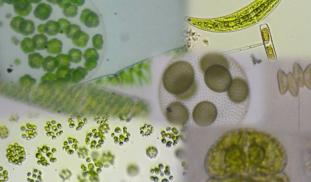Please wait...
About This Project
The aim of this research is to find and test gene regions in the genome of freshwater green algae which can aid the identification of species in this taxon. These so-called molecular barcodes will be amplified by PCR and compared by sequence analysis, and their successful application will aid greatly in determining the current taxonomy of green algae, as well as conducting environmental surveys, identifying new species, or selecting strains for potential human use and applications.

Browse Other Projects on Experiment
Related Projects
How do polar bears stay healthy on the world's worst diet?
Polar bears survive almost entirely on seal fat. Yet unlike humans who eat high-fat diets, polar bears never...
Uncovering hidden insect diversity associated with a likely undescribed gall-forming midge
Does a likely undescribed species of gall-forming midge (pers. comm. Ray Gagné) on Eriodictyon plants (Yerba...
Macrofungi of the California archipelago
The eight islands of the California Archipelago are a well-studied biodiversity hotspot — but we know almost...


